
On a daily basis I use natural cleaners and disinfectants. These are my recipes for natural cleaners and disinfectants. I’ve added a few through the years so new recipes will be marked with an *.
My Favorite Disinfectant Cleaner Spray 12 oz water 20 drops lavender essential oil 20 drops Tea Tree oil 20 drops Rosemary or Thyme essential oil Shake and pour into a spray bottle.
Antiseptic Spray A handful each of dried lavender, rosemary, sage, rue and mint A large glass jar 1/2 gallon organic cider vinegar
Place the herbs in the jar, cover with the vinegar. Cover tightly and let sit for about 6 weeks. Strain into a spray bottle. Be sure to label the bottle. It will store indefinitely. Use this spray to disinfect clean surfaces.
Lavender Antibacterial Spray 1 cup warm water 1 tsp pure lavender essential oil pour water into a spray bottle, add essential oil. Shake gently to mix. Spray surfaces and allow to sit for 15 minutes before wiping or rinsing.
All Purpose Cleaner and Disinfectant 1 teaspoon borax 1/2 teaspoon washing soda 2 Tablespoons lemon juice
1) In a spray bottle that will hold at least a pint, combine the ingredients. Add 1 cup very hot water and shake well, mixing and dissolving the dry ingredients.
2) To use, simply spray and wipe. This can be stored indefinitely.
Homemade Soft Scrub 1/2 cup baking soda Liquid soap 5-10 drops pure antiseptic essential oil such as lavender, tea tree oil or rosemary Place the baking soda in a bowl. Slowly pour in liquid soap, stirring constantly, until the mixture resembles frosting. Add the essential oil. If you have hard water, use a liquid detergent instead of a soap. I use a ‘green’ product because it has no synthetic dyes or perfumes. If you have soft water, you can use castile soap.
Store this mixture in a jar. Scoop out some on a cloth and scrub surfaces, then rinse.
Heavier Duty Soft Scrub
Straight washing soda mixed with a little liquid soap is a good heavier duty scrub. You will need to use gloves with this because it is quite alkaline
Mirror and Window Cleaner Use a pure cotton cloth so that you won’t get lint on mirrors and windows when cleaning them.
1/4 tsp all purpose liquid detergent ( a pure, non-synthetic soap is best) 1 cup water
Just combine the water and soap in a spray bottle. Spray on the surface and wipe clean with a cotton cloth. Be sure to label the bottle. It keeps indefinitely.
Tile and Glass Cleaner 1/2 cup vinegar 1/2 tsp mild liquid detergent 2 cups very hot tap water
Combine all ingredients in a spray bottle. Shake well. Spray onto tiles and glass surfaces, rinse with a sponge. Label the bottle. Keeps indefinitely.
Another Glass and Mirror Cleaner 1/4 cup white vinegar 1 Tablespoon cornstarch 2 cups warm water
Put all ingredients in a large spray bottle. Shake well to dissolve the cornstarch. To use, spray liberally on the glass, wipe with a clean cloth. Buff to a streak free shine with a wadded up piece of newspaper.
Mildew Cleaner
1 tsp tea tree oil 2 cups water
Combine in a spray bottle. Spray onto the mildew, don’t rinse. Label and store indefinitely.
Clean The Toilet
Pour about 1 cup borax into the toilet and let it sit for a few hours. Scrub the inside of the bowl using a toilet brush. Spray straight 5% vinegar onto the toilet rim, seat and top. Scrub the rim. Wipe the seat and top. Periodically, spray the toilet rim with your antibacterial spray and let it dry naturally.
Another Toilet Bowl Cleaner 1 cup borax 1/2 cup white vinegar
1) Flush the toilet to wet the sides. Sprinkle the borax all along the sides of the inside of the bowl. 2) Drizzle the vinegar over the borax and leave over night. 3) Next day, scrub with a toilet brush and flush.
Hard Water Stains and Scale Cleaner
Use an acid like vinegar or lemon juice. Just spray on, let sit for 10-15 minutes, then wipe off. For large areas, soak a wash cloth in vinegar and then lay it on the stained area overnight. Next morning, the scale should be easy to scrub off.
Soak shower heads in vinegar to remove hard water buildup. Use an old toothbrush to scrub it away.
Damp/Dust Mop
One part vegetable glycerin One part vinegar One old, clean, dust free cloth
Mix the first two ingredients. Soak the cloth in the mixture until it has absorbed all it will absorb. Take the cloth out of the liquid, and gently squeeze an excess liquid from the cloth. Cover a mop with the cloth and use all over your hard floors, ceilings, walls and woodwork to pick up dust, dist mites and to repel mites, neutralize allergens.
Some Natural Cleaners and What I use Them For
3 percent hydrogen peroxide – good for lightening stains and as an antibacterial agent on clothing. Baking soda – Good for gentle abrasive cleaning. Can also be used as a mild bleach and can neutralize acid based stains.
Citrus solvents All purpose stain removal. Don’t use if you have cats.
Cornmeal Good for absorbing oily, messy stains.
Enzymes I use digestive enzymes like pepsin or papain. They are good for getting out milk and formula stains. Really any kind of carbohydrate stain.
The Freezer! Freeze gum and candle wax before attempting to remove it, works better.
Glycerin softens old stains
Laundry Detergents There are some stains that I just can’t get out with natural stuff, like lipstick and makeup or other oily stains. Sometimes nothing works on ring around the collar except detergent.
Salt salt kills some bacteria and is good to add to your cleaners to make a mild abrasive.
Soap All around good cleaner but don’t use it on fruit stains of any kind, it can set them! (wine, jam, juice….)
Washing soda I love this stuff. Its one of the heavy duty natural cleaners. Good way to remove stains, deodorizes.
I use some of these cleaners on a weekly basis. Be sure to check labels on commercial cleaners and do your research to see if they are acceptable for your home. I like the new Clorox Green cleaners, but when I look at the label….. I realize that its just about exactly what I’ve been making here at home!
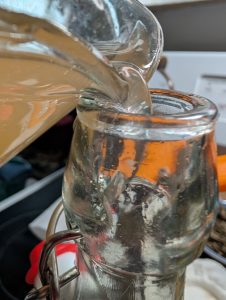
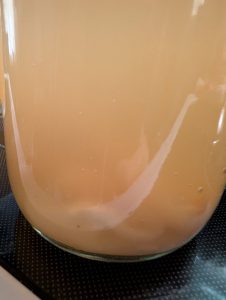
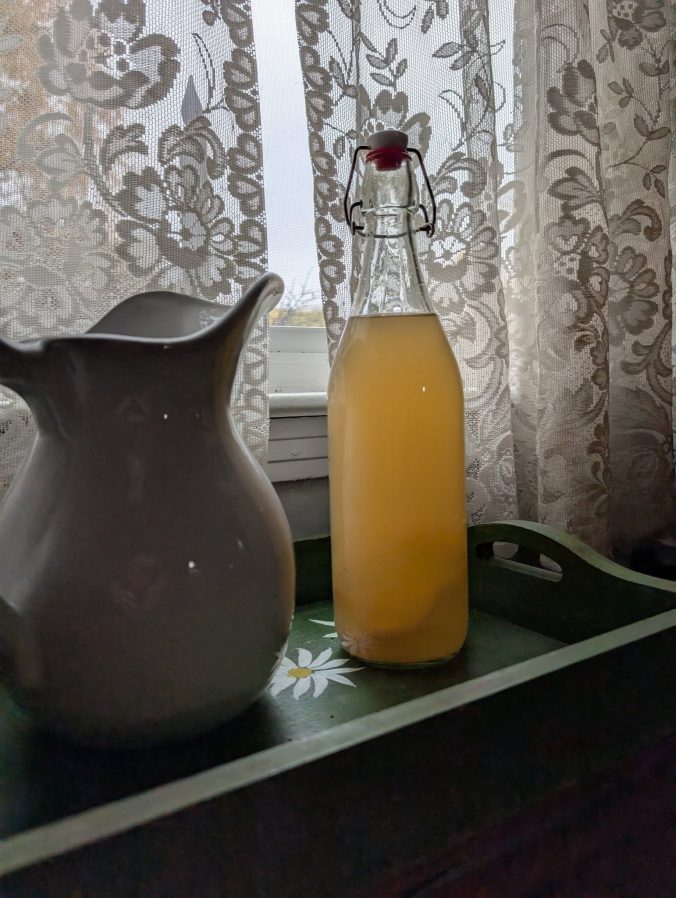


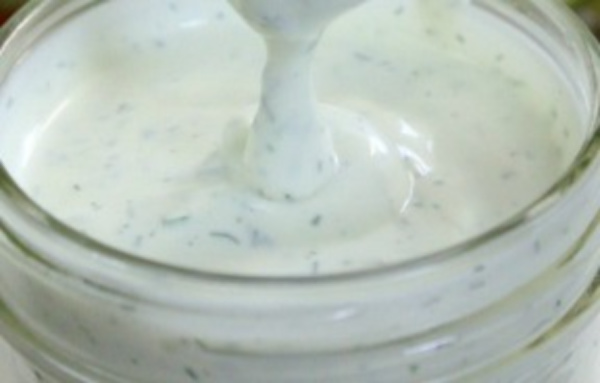



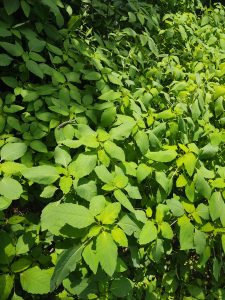
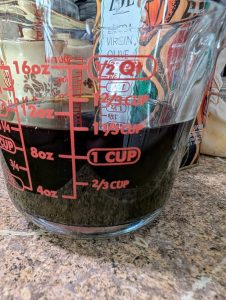
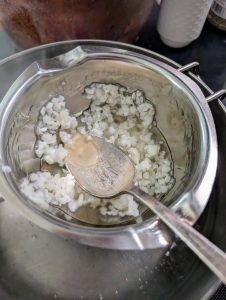
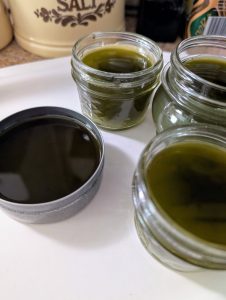
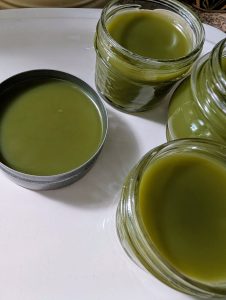










 Hello and welcome! I'm Sylvia Britton, and I've been online since 1996 offering encouragement and help in the spirit of Titus 2 and Proverbs 31 at Christian Homekeeper. CHK is the original Homekeeping site on the internet. There have been a few knockoffs of the name, but this is the original.
Hello and welcome! I'm Sylvia Britton, and I've been online since 1996 offering encouragement and help in the spirit of Titus 2 and Proverbs 31 at Christian Homekeeper. CHK is the original Homekeeping site on the internet. There have been a few knockoffs of the name, but this is the original.